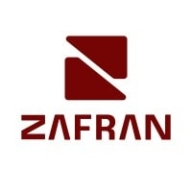


IBM Guardium Vulnerability Assessment and SentinelOne Singularity Identity are competitors in the cybersecurity market. IBM Guardium tends to have an advantage in pricing and support, while SentinelOne Singularity Identity is favored for its advanced features despite a higher cost.
Features: IBM Guardium includes comprehensive vulnerability scanning, risk assessment, and data protection, making it suitable for organizations requiring detailed data security insights. SentinelOne Singularity Identity focuses on identity protection, threat detection, and AI integration, offering a sophisticated approach to cybersecurity that emphasizes precision in its identity protection capabilities.
Room for Improvement: IBM Guardium could improve in areas such as integration with third-party tools, enhancing AI-driven analytics, and increasing user-friendliness. SentinelOne Singularity Identity has room for improvement in cost-effectiveness for smaller organizations, expanding its customization options, and simplifying its interface for wider user accessibility.
Ease of Deployment and Customer Service: IBM Guardium offers streamlined deployment options suitable for various IT environments, supported by solid customer service. SentinelOne Singularity emphasizes rapid implementation using AI-driven tools, which facilitates a smooth installation experience particularly for tech-savvy environments.
Pricing and ROI: IBM Guardium is known for its competitive pricing model that appeals to budget-conscious organizations by keeping initial costs low. SentinelOne Singularity Identity may require a higher upfront investment, but it delivers substantial ROI through advanced threat protection, making it appealing to businesses seeking comprehensive security.


Zafran Security integrates with existing security tools to identify and mitigate vulnerabilities effectively, proving that most critical vulnerabilities are not exploitable, optimizing threat management.
Zafran Security introduces an innovative operating model for managing security threats and vulnerabilities. By leveraging the threat exposure management platform, it pinpoints and prioritizes exploitable vulnerabilities, reducing risk through immediate remediation. This platform enhances your hybrid cloud security by normalizing vulnerability signals and integrating specific IT context data, such as CVE runtime presence and internet asset reachability, into its analysis. No longer reliant on patch windows, Zafran Security allows you to manage risks actively.
What are the key features of Zafran Security?
What benefits can users expect from Zafran Security?
In industries where security is paramount, such as finance and healthcare, Zafran Security provides invaluable protection by ensuring that only exploitable vulnerabilities are addressed. It allows entities to maintain robust security measures while allocating resources efficiently, fitting seamlessly into existing security strategies.
IBM Guardium Vulnerability Assessment scans data infrastructures (databases, data warehouses and big data environments) to detect vulnerabilities, and suggests remedial actions. The solution identifies exposures such as missing patches, weak passwords, unauthorized changes and misconfigured privileges.
Singularity Identity, a component of the Singularity platform, provides threat detection & response (ITDR) capabilities to defend Active Directory and domain-joined endpoints in real-time from adversaries aiming to gain persistent, elevated privilege and move covertly. Singularity Identity provides actionable, high-fidelity insight as attacks emerge from managed and unmanaged devices. It detects identity misuse and reconnaissance activity happening within endpoint processes targeting critical domain servers, service accounts, local credentials, local data, network data, and cloud data. On-agent cloaking and deception techniques slow the adversary down while providing situational awareness and halting adversarial attempts at lateral movement. Singularity Identity helps you detect and respond to identity-based attacks, providing early warning while misdirecting them away from production assets.
Singularity Identity’s primary use case is to protect credential data and disrupt identity-based attacks. The most valuable function of Singularity Identity is its ability to misdirect attackers by providing deceptive data to identity-based recon attacks. Additionally, it can hide and deny access to locally stored credentials or identity data on Active Directory domain controllers.
Singularity Identity also provides rapid detection and respond to identity attacks, capturing attack activity and feeding it directly to the Singularity platform’s Security DataLake for enterprise-wide analysis and response.
By implementing Singularity Identity, organizations benefit from enhanced security, reduced credential-related risks, and improved user productivity. It detects and responds to identity-based attacks, ensuring only authorized individuals can access critical identity data. With its cloaking capabilities to hide identity stored locally on endpoints or in the identity infrastructure and it’s ability to provide decoy results to identity-based attacks, organizations can effectively secure their sensitive or privileged identities, resulting in improved overall identity security.
We monitor all Vulnerability Management reviews to prevent fraudulent reviews and keep review quality high. We do not post reviews by company employees or direct competitors. We validate each review for authenticity via cross-reference with LinkedIn, and personal follow-up with the reviewer when necessary.